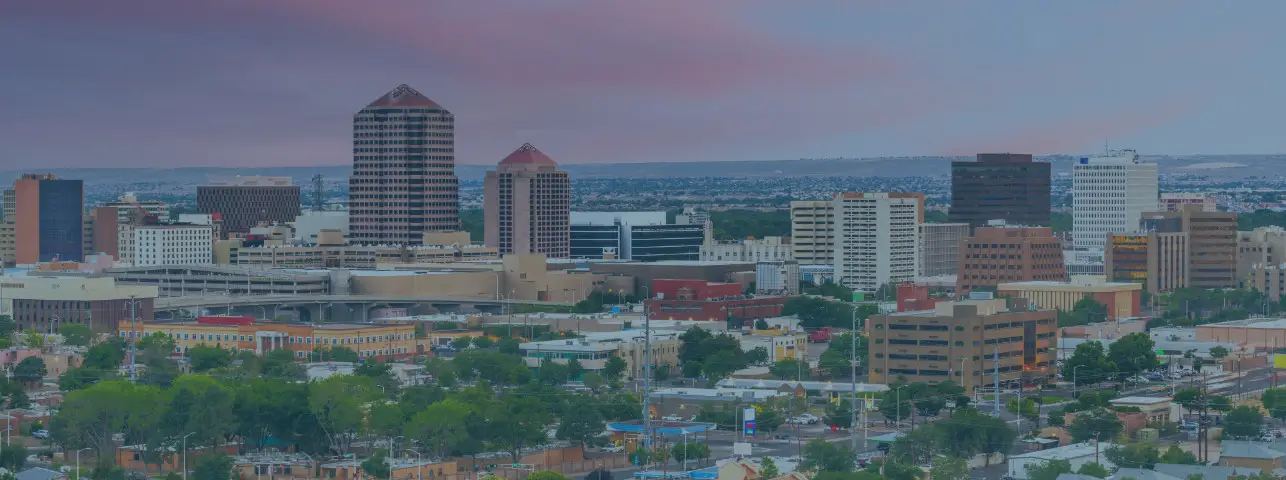CALL (800) 863-5312 TO SPEAK WITH A CAR ACCIDENT ATTORNEY FOR FREE
Traffic intersections are some of the most dangerous places for drivers and are the most common places for car accidents and vehicular injuries in the state of Colorado. Moreover, rear-end collisions are one of the most common types of accidents that occur at traffic intersections. These accidents can range from high-impact collisions to minor fender benders. Regardless of the speed of the offending vehicle, even minor accidents can result in very serious personal injuries if the victim is in poor health or has a pre-existing condition.
If you or a loved one has sustained personal injuries or property damage in a rear-end collision that resulted from someone else’s negligence, you may be entitled to compensation. At Zinda Law Group, our Denver-area attorneys have the knowledge and skills necessary to help you maximize your compensation for your accident. Our firm has handled numerous car accident and rear-end cases for plaintiffs across Colorado. Call Zinda Law Group at (800) 863-5312 for a 100% free case evaluation with our experienced Denver car accident lawyers today.

John (Jack) Zinda
Founder / CEO
Over 100 years of combined experience representing injured victims across the country.
Available 24 / 7|Free ConsultationCommon causes for rear-end collisions
A rear-end accident occurs when the front of one vehicle strikes the rear of another vehicle. These collisions generally occur when someone is engaging in distracted or careless driving. Drivers can operate their vehicles carelessly if they are following too closely or if they fail to adequately observe the changing conditions of the roadway. Whereas distracted driving is usually caused by one of the following:
- Operating the radio or other dashboard controls
- Texting while driving
- Talking on a cell phone while driving
- Eating or performing other actions while driving
- Distractions or interference from other vehicle occupants
- Generally turning one’s head and attention away from the road
According to the Colorado Department of Transportation’s 2019 Problem Identification Statewide Report, in 2017 there were 118,842 traffic collisions and 648 traffic fatalities across the state of Colorado. When the Department of Transportation separated these accidents according to the “actions associated with causing the crash,” they found that approximately 8% of all vehicle crashes were the result of drivers failing to stop at a traffic light or a stop sign. The same study found that younger drivers (ages 15-20 years old) were about 2% more likely to be involved in a crash for failing to stop at a traffic light or stop sign than older drivers (ages 21 years and older.)

Neil Solomon
Partner
Real results matter. We do not get paid unless we win your case.
Available 24 / 7|Free ConsultationWhat to do after being rear-ended?

Elecia Byrd
Attorney
Standing by 24 hours a day, 7 days a week ready to answer in your time of need.
Available 24 / 7|Free ConsultationSeek Safety and Medical Attention
Immediately following a rear-end collision, your primary concern is to assess the safety of all parties. If there are injuries or a fatality, notify emergency medical services right away. If your vehicle is still in the roadway, and you are able to move it, you should attempt to maneuver it out of traffic onto the shoulder of the road and illuminate the hazard lights.

Cole Gumm
Attorney
We are here to ensure you won’t have to face this difficult time alone.
Available 24 / 7|Free ConsultationReport the Accident
Once you have reached relative safety, call 911 to provide them the location of the rear-end collision. Under , the driver of any vehicle who fails to stop and give notice, information, and aid after being involved in an accident resulting in damage to a vehicle or injury to persons, commits a class 2 misdemeanor traffic offense.
Offenders may also spend up to 90 days in jail and pay a fine of up to $300 for failing to stop and provide information. Regardless of whether the accident is a minor fender bender or a major collision, getting an accident report is necessary and extremely helpful in furthering your future claim for financial compensation. Although every driver in the state of Colorado has a duty to report any vehicular accident, the police do not have to make an accident report for every Colorado car accident. Officers have the discretion to decline to make a report if there are no injuries and the damages do not appear to exceed $1,000. However, the police must make a report if one of the parties can’t show proof of insurance or if specifically requested to do so by one of the participants in the accident.
Gather Information and Document the Accident
As you wait for the police and emergency services to arrive, you should assess the scene of the accident and the extent of damage to your respective vehicles. You should try to gather as much evidence as possible in the moments immediately following the collision by taking videos and pictures of the damage, to preserve the details of the accident scene.
You should also document any injuries to yourself or your passengers as soon as possible. Additionally, if possible, you will want to gather information from the other vehicle(s) involved, including but not limited to:
- The other driver’s name and contact information
- (If driving a company vehicle) the other driver’s company and employer’s name
- The other driver’s license number
- The other driver’s insurance provider and policy numbers
- The other vehicle’s model and license plate number
You will also want to note the names of any of the other driver’s passengers or third-party witnesses who saw the accident occur. Lastly, when the police arrive, identify the officers, record their badge numbers, and request a copy of the accident report.
After the Accident
Follow the accident, you will want to write down everything you can remember about the accident. Be sure to include as many details as you can remember, including the date, the location, the time of day, and the weather conditions. Once you’re ready, contact an experienced personal injury attorney, who specializes in automobile and truck accident cases.
Read More: Car Accident FAQ
Attributing fault for rear-end collisions in Colorado
There is a common misconception that the driver in the back is always at fault in causing a rear-end collision. However, this is not always the case. Regardless of how the accident occurred, plaintiffs must be ready to prove that the other driver was negligent if they want to be compensated. Establishing fault or liability for the crash can be made even more complicated if the rear driver pushes the vehicle they hit into another vehicle—setting off a multi-vehicle chain of collisions.
Accidents Involving Two Vehicles
When a rear-end collision occurs between two vehicles, the rear driver is generally presumed to be negligent under Colorado law. Specifically, Colorado law requires that drivers “shall not follow another vehicle more closely than is reasonable and prudent, having due regard for the speed of such vehicles and the traffic upon and the condition of the highway.” This means that when there is a rear-end collision involving just two vehicles, the court will presume that the rear driver was either following too closely or was not monitoring the difference in speed between the vehicles involved.
However, the mere fact an accident occurred, does not raise a presumption of negligence. This presumption can be rebutted by providing facts to demonstrate that the front driver was driving negligently and contributed to or caused their own rear-end collision. For example, if the front driver suddenly changing lanes for no apparent reason, without signaling, and leaves no time for a rear driver to adjust, then the front driver may be liable.
Multi-Vehicle Rear-End Collisions
A more complicated situation occurs when there are multiple vehicles involved in a series of impacts that were triggered by the negligence of a single or multiple rear drivers. These accidents are often referred to as “chain reaction” wrecks.
In this situation, both the initial rear-ender(s) and any subsequent drivers in the chain could bear some fault for any of the resulting injuries or damages. While a chain-reaction crash makes the attribution of fault more complex, the same general principles for two-car collisions hold true. The rear driver always has an obligation to keep a reasonable distance behind the cars ahead of them. That is to say, each rear driver has to rebut the presumption that they were not maintaining a reasonable and prudent distance between themselves and the car in front of them. To establish these facts for rebuttal, the parties will typically employ an accident reconstructionist to simulate the events of the chain reaction to better apportion fault.
When is the Front Driver at Fault for Being Rear-Ended?
While there is a heavy presumption that the rear driver is at fault, in some cases, it is the lead driver who causes the wreck. The driver in front could be partially or completely liable if:
- They suddenly slam on the brakes for no apparent reason
- They are driving erratically, and causes a driver in another lane to swerve and rear-end them
- They unexpectedly reverse at an intersection, for example, if they pulled too far out while at a traffic light
- They suddenly change lane in front of a driver, and there is insufficient time for the driver to stop or slow down
- They merge into traffic immediately in front of another vehicle but fail to maintain an adequate speed
- Their brake lights do not work properly
- They get a flat tire or experience mechanical failures and fail to pull over to the side of the road
Common injuries that can occur when rear-ended while stationary
Depending on the speed of the rear-end collision, different forms of injuries can manifest in accident victims. Among these injuries is whiplash. Whiplash refers to injuries to the neck, shoulders, or upper back caused by the head and neck being snapped forward due to sudden force. The sudden impact and whipping of the head causes the muscles and ligaments of the neck and shoulders to stretch beyond their normal range of motion in a fraction of a second, straining and often tearing soft tissue.
Injuries caused by whiplash can be quite painful and may linger for days or weeks after the accident. Even the whiplash of a minor fender bender can cause significant soft tissue damage, given the angle of impact and the prior physical condition of the victim. If you or a loved one has experienced whiplash that results in severe pain that persists for several days or which radiates down the arms or legs, you should seek medical attention immediately.
Other common injuries that result from rear-end collisions include:
- Back and spinal injuries
- Arm and wrist injuries (from holding the steering wheel at the time of collision)
- Broken bones or Fractured ribs (from the sudden deployment of airbags)
- Facial injuries, such as scarring and disfigurement (from shards of glass or a victims face striking the steering wheel or dashboard)
- Skull and brain injuries (from high impact collisions resulting in traumatic brain injuries)
- Crushed limbs, amputations, or paralysis
GET HELP FROM OUR colorado traffic accident ATTORNEYS TODAY
At Zinda Law Group, our Texas attorneys have helped accident survivors and their loved ones get their lives back on after minor and major collisions We have the knowledge and resources necessary to help you seek maximum compensation for any associated medical bills, lost income, property damage, pain and suffering, and all the other costs caused by your rear-end collision.
Our firm believes that injured clients should not have to worry about their ability to afford high-quality legal representation. This is why we offer 100% free consultations. Zinda Law Group operates on a contingency fee basis, meaning you will pay nothing unless we win your case. That’s our No Win, No Fee Guarantee.
If you or a loved one has suffered a brain injury, call Zinda Law Group at (800) 863-5312 to receive your free consultation with our Denver rear-end attorneys today. Check out our blog for more helpful resources.
Meetings with attorneys are available by appointment only.

Jason Aldridge
Attorney
We have successfully represented clients in a wide variety of cases across the country.
Available 24 / 7|Free Consultation








